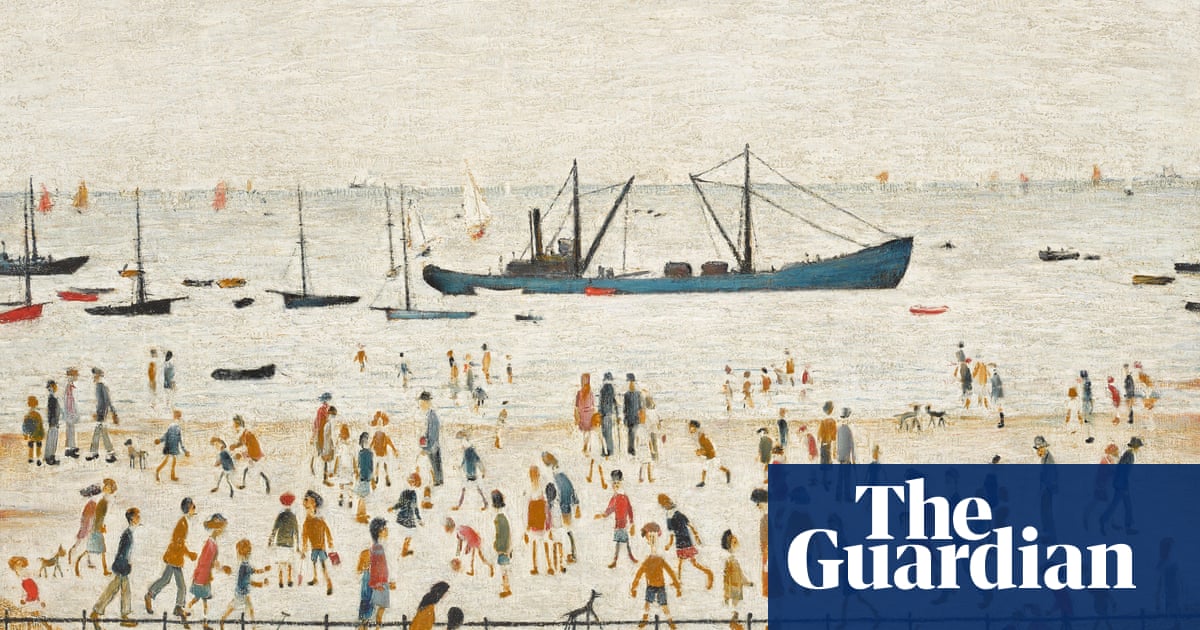
n the tangle of west London’s railway junctions – out Willesden way, where trains creak around tight curves, attempting to circumvent the London termini – I recently came across lines of new carriages waiting for work. I think it was at that famous railway placename Old Oak Common, where the smoke from the locomotive sheds once lay black across the sky.
Several long sidings were filled with them: new, in a livery of shining white, with the London Transport roundel emblazoned on their sides – in purple and crossed with the words ELIZABETH LINE. The sight gave me a stab of longing for a time of greater certainty, pre-Brexit and pre-Covid, when the most problematic aspect of London’s future, the levels of inequality among the population apart, was its apparently unstoppable growth.
In the words of a report published by Oxford Economics, the city’s economy was “growing strongly, easily outpacing both the UK and its nearest European rivals such as Paris and Frankfurt”. What the report called “significant investments” in public infrastructure, office buildings, retail, and flats and houses pointed to a widespread optimism that the growth would continue “not just for the next year or two but for many years to come”. The report wondered how confident London should be about its growth trajectory – how a crisis in the eurozone or the possibility of the UK’s departure from the EU might affect it – but the answer seemed to be: pretty confident, all things considered. That was in March 2016.
Crossrail, which the Queen renamed after herself the previous month, is the largest of these public investments. The east-west link across the capital was first proposed in the 1940s. Construction began in 2009 with a promised finishing date of 2018 for the line’s 73 miles, which in 2018 was put back to 2019 and now, after further postponements, is forecast to be early 2022.
It has been a grand project. Thirteen miles of twin tunnels were bored under the city and 8m tonnes of earth removed, most of it to Wallasea Island in Essex, where it forms the foundations of a nature reserve. Its trains are, or were, expected to carry 200 million passengers a year, simplifying and quickening their previous journeys and relieving overcrowding on other lines. Its estimated cost has predictably risen, from £15.9bn to £18.25bn, and over the next two years may rise further; but in 2022, all being well, a traveller from the City of London will reach Heathrow in 33 minutes, and with any luck have a seat all the way.
For the present, the most the commuter can do is travel by new trains on the old routes from Berkshire and Essex to Paddington and Liverpool Street. The tunnels that connect the two terminals can be experienced only in photographs. Pristine, beautifully lit, populated only by a few engineers in hard hats and smart orange overalls, their curved emptiness suggests a memorial. If the future obeys conventional wisdom and the commuting habit begins to die – with workers working onscreen at home, or in cheaper offices in the outer suburbs, or coming into the city less regularly, off-peak and two days a week rather than five – then these tunnels might come to mark the turning point of a tide in human traffic that has been rising since railways first reached London in the late 1830s – rising and widening, so that people are sucked every morning from quite distant towns and cities (Weymouth, Norwich, Grantham, Bath) to serve the metropolitan economy.
Of course, conventional wisdom could be wrong, and London could go back to business as usual. I look most days at the windows of estate agents in our London high street, and expect to see the prices fall, as ordinary sense suggests they would. But they never do; perhaps prices are sustained by the fall in sterling’s value, making property cheaper for the foreign speculator. The Elizabeth line might keep up a similar appearance of success, not by expanding the market but by stealing commuters from other routes, leaving them half-empty and vulnerable to the axe.
Bad luck or poor timing can spoil the best-laid scheme. Some projects, conveniently for their supporters, become too late to stop. “That ship has sailed” has become the justification for HS2, just as it was in the 1960s when an incoming Labour government looked as if it might cancel the Polaris nuclear submarine programme, as promised in the manifesto. The Admiralty told Harold Wilson that construction of the first two submarines had “passed the point of no return”, so Wilson’s administration went on to complete them and a further two; in this murk, the huge and continuing expense of Britain’s “independent nuclear deterrent” was born.
Other projects succeed despite their birth in the late afternoon of optimism, just before sunset and a chilly dusk. When in 1911 Britain decided to move its Indian capital from Kolkata to New Delhi it imagined that sunset would never come. George V laid the foundation stone; the leading English architects Edwin Lutyens and Herbert Baker were appointed; and over the next 20 years a majestic imperial headquarters was created, at considerable and often criticised expense. It was, from the British point of view, a folly: when the new city was eventually inaugurated, British rule had only 16 years left to run. Independent India, on the other hand, inherited a capital that had been barely worn, a planned city whose broad avenues and handsome architecture made it among the most attractive in the world.
That was a good outcome. There is another kind. Growing up in postwar industrial Scotland I often met Ozymandias, in the shape of ruins created by an excess of confidence 50 years before. Ozy could be encountered in all kinds of locations, but perhaps most memorably in the west end of Glasgow, among the stone terraces and villas of the city’s bourgeoisie, where several abandoned stations marked the Caledonian Railway’s attempt in the late 1890s to woo the rich commuter. The best Scottish architects had been hired – James Miller and JJ Burnet were the able counterparts of Lutyens and Baker – to produce extravagant buildings that ranged in style from “English domestic” to Muscovite cathedral. Their trade destroyed by the coming of the electric tram, most of these stations had put up their shutters by 1940, though the buildings survived long after. In the 1960s it was still a delight to turn a corner in Glasgow and come across what seemed to be the Kremlin.
In the Edwardian age, the same railway opened a 40-mile line from the city’s eastern edge all the way to the Ayrshire port of Ardrossan, paralleling the older line of a rival company for most of the way. This was confidence bordering on madness; cars were already kicking up the dust of Scottish roads. But the Caledonian believed the new line would cure a problem of capacity at Glasgow docks; coal for export from the Lanarkshire mines would be shipped from Ardrossan instead. And so embankments were made, cuttings dug, stations and viaducts built, double track laid, and telegraph wire strung from post to post: all in the assumption that the Lanarkshire collieries had near-inexhaustible reserves of coal and that no new Glasgow docks would be built, assumptions that proved false.
It closed after 30 years, by which time the Caledonian company itself was a memory. I imagine that at its opening some local aristocrat spoke about how the district would “prosper mightily” – the new Johnson mantra. Like a lot of things our prime minister says, the words belong in the mouth of a man in a top hat as he cuts a ribbon – a man who, if truth be told, hasn’t the faintest idea of what comes next.












